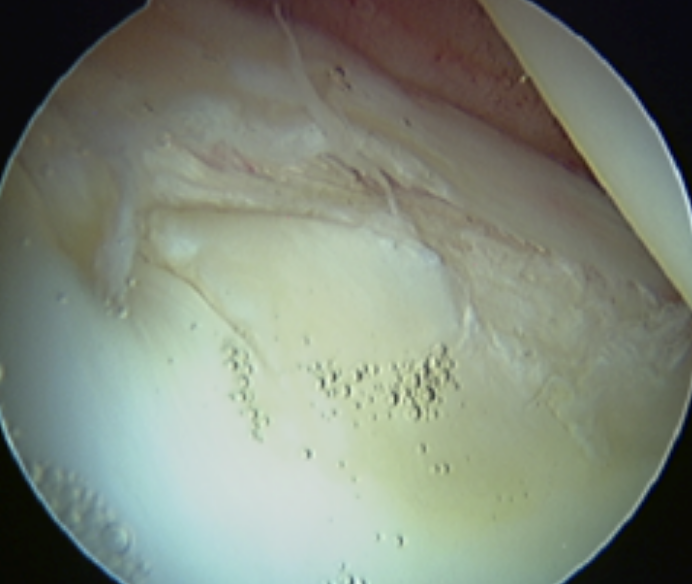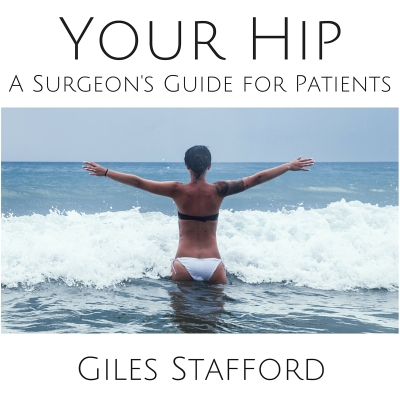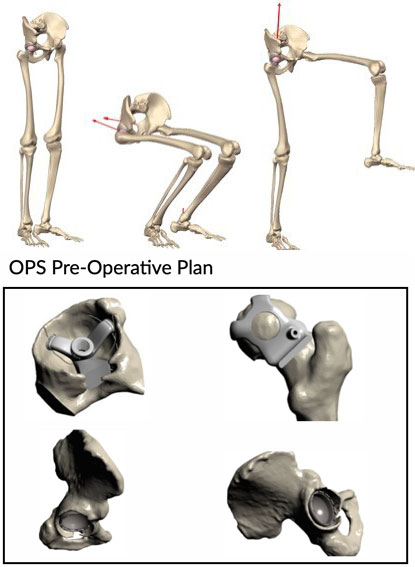Mr Stafford works closely with physiotherapists & sports physicians at Sport Hip London as part of a multidisciplinary approach to ensure that all aspects of the patient’s problems are identified and addressed appropriately both prior to and after surgery.
LABRAL TEARS SURGERY
The acetabular labrum is a fibrous structure, which surrounds the femoral head. It forms a seal to the hip joint, and is an important adjunct to the lubrication of the joint. The labrum also has a nerve supply and may cause pain if damaged. The underside of the labrum is continuous with the acetabular articular cartilage so any compressive forces that affect the labrum may also cause articular cartilage damage, particularly at the junction between the two, the chondrolabral junction. The labrum may be damaged or torn as part of an underlying process, such as FAI or dysplasia (shallow hip socket), or may be injured directly by a traumatic event. Depending on the type of tear, the labrum may be either trimmed (debrided) or repaired. Various techniques are available for labral repair, mainly using anchors, which may be used to re-stabilise the labrum against the underlying bone, allowing it to heal in position.

HIP ARTHROSCOPY SURGERY
The term arthroscopy (or ‘keyhole’ surgery) refers to the viewing of the inside of a joint through a small operating telescope. First described in the 1970s, arthroscopic techniques have become an increasingly popular method of treating conditions around the hip. This is mainly due to the recent identification of pathological conditions such as femoroacetabular impingement (FAI) and associated labral tears. In recent years, however, this technique has been used to help in the treatment of many other joint pathologies, and has gained popularity because of the small incisions used and improved recovery times when compared with conventional ‘open’ surgery. The other advantages of arthroscopic versus open surgery are decreased blood loss, faster recovery periods and less pain. Hip arthroscopy can also be performed as a day-case procedure (i.e. no need to stay in hospital overnight).
TOTAL HIP REPLACEMENT SURGERY
During a total hip replacement (THR), the arthritic or damaged joint is removed and replaced with an artificial joint that moves just like a healthy hip. Both the head of the femur (ball on-top of the thigh bone) and the acetabulum (hip socket) are both replaced. A metal stem (often titanium) is implanted into the femur and femoral head is replaced with an artificial ceramic ball, which attaches to the metal stem. The hip socket (into which the ball fits) is replaced with a titanium shell with an artificial liner made of ceramic or hardwearing polyethylene (which sometimes can be fixed directly with bone cement). These surfaces that move together are known as the ‘bearing’ and allow for smooth and painless movement of the ball in the socket.
The artificial joint may be cemented in position or press-fitted securely in place without cement (uncemented). The length of stem used in THR can also vary from traditional, longer stems to shorter contemporary, bone conserving stems.
OPTIMISED POSITIONING SYSTEM (OPS)
LASER GUIDED, PERSONALISED SOLUTIONS FOR HIP REPLACEMENT SURGERY
This is an innovation designed to improve the long-term outcome of hip replacements. The rationale is to determine what exact angles the acetabular shell should be placed in the pelvis, determined by your own anatomy and the way you move. It requires three extra x-rays and a CT scan over the normal imaging that is required for pre-operative planning. A personalised instrument is manufactured (3D printed) which fits inside your pelvis and uses a laser to indicate where Mr Stafford and the analysts and have agreed is best for you.
Mr Stafford may offer this to you if he feels that your case is suitable. However, it takes about four weeks to manufacture and also exposes the patient to more radiation (from the x-rays and scan) than normal. However, early research has demonstrated that this system may reduce the risks of squeaking and dislocation following surgery.

Your Hip Replacement –
A Surgeon’s guide for patients
Please download this free guide for patients to hip surgery london
Please be aware that the information contained in the guide is a general in nature and should not be considered medical advice.
RECOGNISED BY ALL THE MAJOR INSURERS



